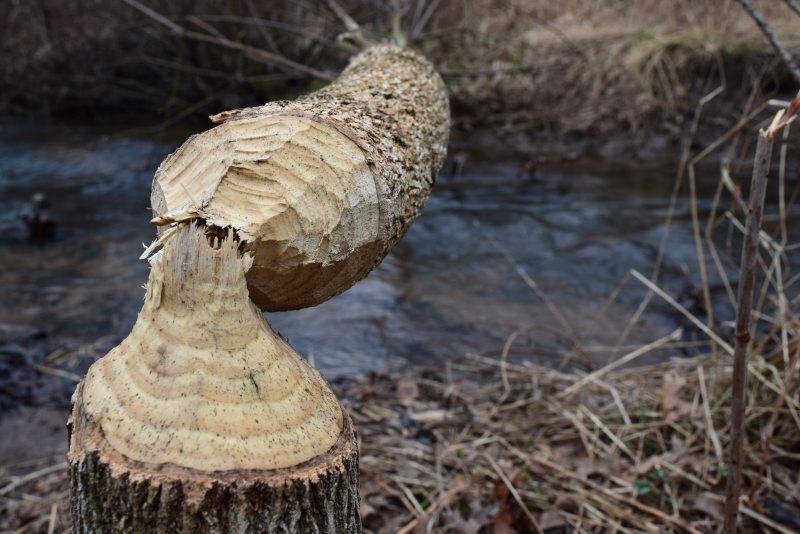A spoonful of sugar helps the medicine go down right? Let’s have something sweet and something not-so-sweet today because beavers face all kind of receptions. Here’s the response they’re getting in a park in Madison Wisconsin, because really who ever heard of wildlife in a park!
Beavers create controversy at Madison park
They say, in addition to tree damage, beavers often build dams that could create flooding across the park. With raised water levels, that could also increase the likelihood of fish dying.
People also say they’re upset the public was not notified. The city says trapping is a longstanding wildlife management practice. They says it’s not practical to have a public process prior to each instance of trapping being authorized, given the timing of a quick response.
That’s right, the mean beavers will make the water too deep and the fish might drown! And we do this all the time whenever we want to so don’t complain! We’re glad at least that people are upset about this. Because anytime people are forced to talk about their silly decisions on the nightly news there is a spark of hope the right people will think about changing.
Necessity may be the mother of invention. But discomfort is the precursor to listening.
Well, pay attention. You should take a lesson from two states (and some lakes) folks really paid attention to Joe Wheaton teaching about beaver benefits. Not clear why this article is being written in Pennsylvania but I’m sure glad it is.
 To Aid Streams Simply, Think Like a Beaver
To Aid Streams Simply, Think Like a Beaver
A buck-toothed rodent could teach people a thing or two about stream restoration.
Beavers have been building dams along North American streams for centuries, and their habits suggest cheap, simple ways to improve water quality, said Joseph Wheaton, an associate professor of watershed sciences at Utah State University.
Most current stream restoration practices are costly and require heavy machinery to rework small tracts of land.
“I would argue we spend that money so disproportionately on little postage-stamp restoration projects here and there, leaving millions of miles of streams neglected,” Wheaton said during a March 22 USDA webinar.
Wow, it was a webinar that inspired this article? Good work, somebody was paying attention. I wonder who. The author, Philip Gruber? He’s a staff writer, but maybe one with a eye on this? The only other name mentioned in the article is a sage brush specialist from Portland, Jeremy Maestas.Someone who works for Lancaster Farming wanted this written, and I, for one, am thrilled. Pennsylvania is one big kill-beavers state, so it’s remarkable. Dr. Wheaton must have been very convincing.
Beavers have contributed to those changes in the course of streams. To keep safe from predators, beavers like to have an underwater entrance to their above-water lodge. If the water is not deep enough to have such an entrance — often the case on headwater streams — beavers build dams to make it work.
 Beavers are found across much of North America, almost anywhere there’s water and wood. They are well-established in most areas of Pennsylvania.
Beavers are found across much of North America, almost anywhere there’s water and wood. They are well-established in most areas of Pennsylvania.
In places where they aren’t, such as Lancaster and Berks counties, excessive trapping and landowners’ distaste for beaver damage are the main reasons, according to a 2008 report by the Pennsylvania Game Commission.
The idea of using beavers as conservation accomplices dates back at least 60 years, when Idaho parachuted beavers into a wilderness area to improve trout habitat and reduce the risk of flooding.
That turned out to be fairly cheap and effective, Wheaton said, although he isn’t necessarily prescribing a furry air drop for Kutztown or Quarryville.
Humans can build beaver-damlike structures themselves with logs and large woody debris.
These structures can slow down a “bowling alley of a stream” and turn it into a more complex, more gently flowing habitat, he said.
 Dubbed beaver dam analogues, these structures can be built with hand labor. Even volunteers and children can get involved — no heavy machinery required.
Dubbed beaver dam analogues, these structures can be built with hand labor. Even volunteers and children can get involved — no heavy machinery required.
A beaver dam analogue can easily be adapted to fit the location, and it’s relatively simple to build a complex of dams as beavers often do, Wheaton said.
Considering they are made of raw wood, beaver dam analogues don’t have a super long life span — one to 10 years, depending on conditions.
That’s OK, Wheaton said. “Sometimes the failure of these dams produces some of the best habitat.”
Wait for it…here comes my favorite part.
Artificial beaver dams don’t work quite as well as actual beaver dams do, so once people have laid the groundwork, it often is possible to turn the conservation work over to the critters themselves.
HERE ENDETH THE LESSON. The moral of the story is that you can get your buddies together and run around cutting up trees and pretending to be beavers every few years or you can simply stop killing the animals and let the be themselves, making repairs as needed and constantly improving their work.
Which one sounds easier to you?






































